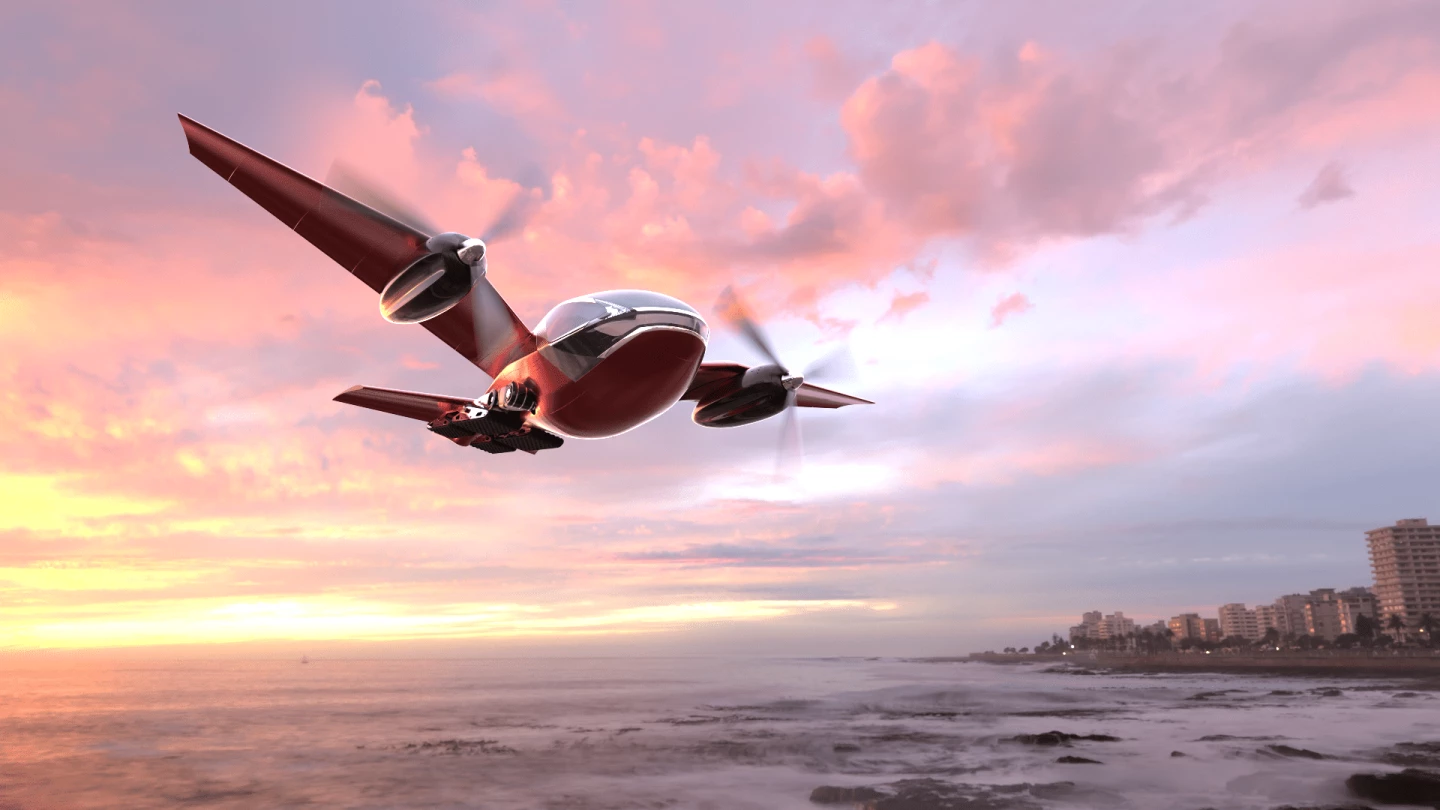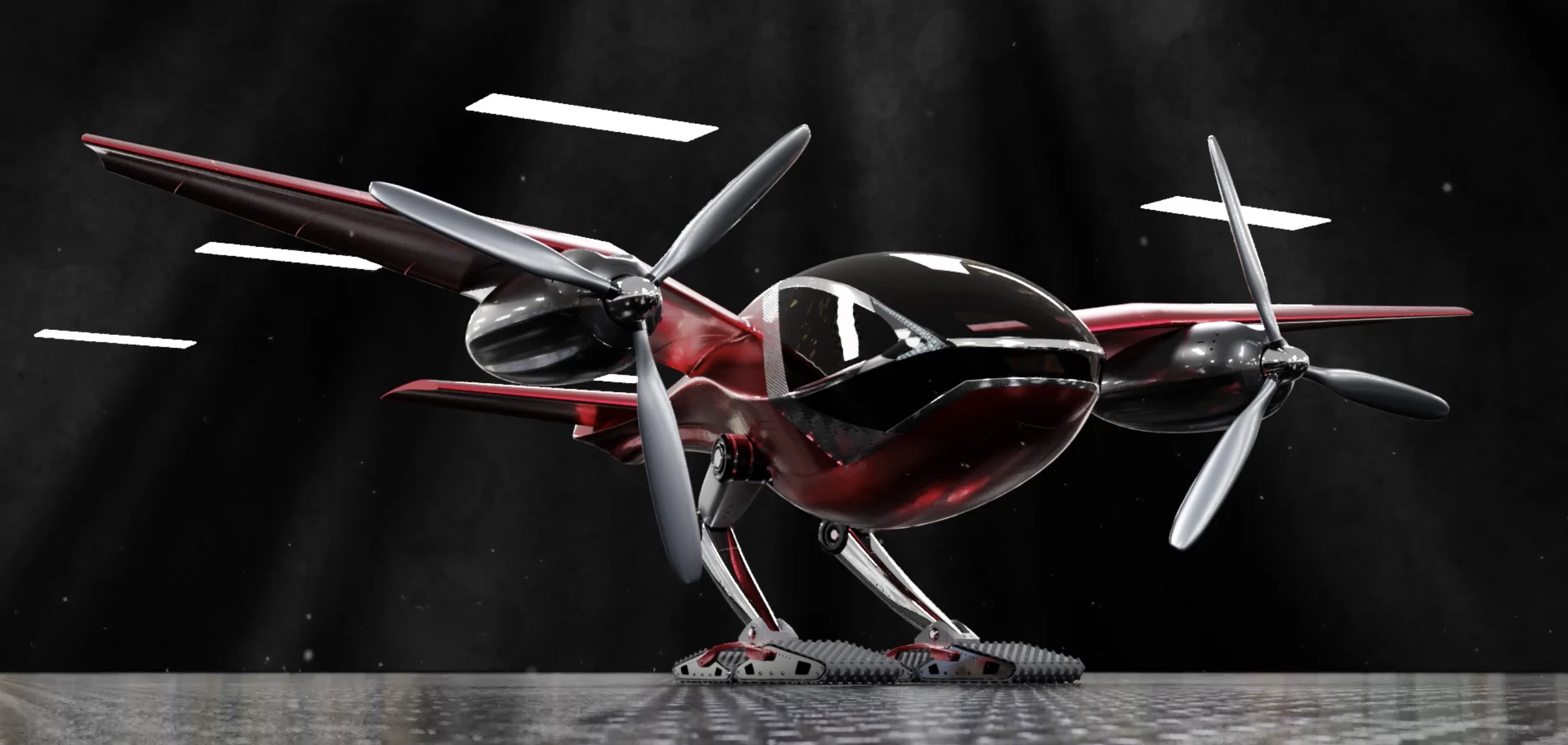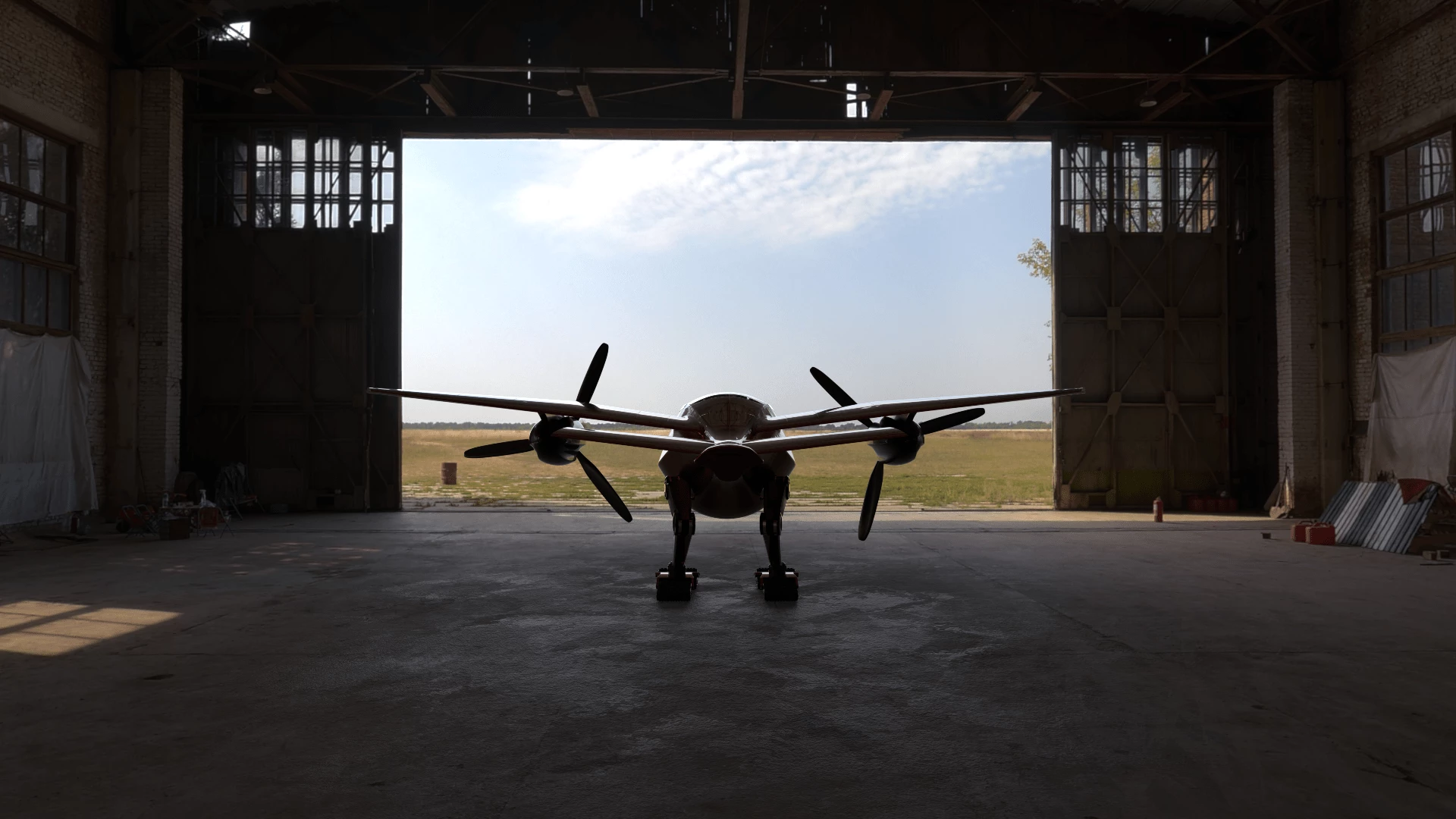Africa, says new electric aircraft startup Phractyl, is in a pretty unique situation as the eVTOL wave begins to break, since it's got so little in the way of ground transport infrastructure.
So aircraft that can take off and land vertically – without needing runways or helipads, or carrying the high costs of helicopters – could make an impact way beyond just cutting down commute times for grey-suited stockbrokers that don't want to take the train. They could make an absolutely transformational difference.
So a small team assembled under the name Phractyl to create an African solution to an African problem, and they came up with this, the Macrobat – a "near vertical takeoff and landing," or NVTOL aircraft with bird legs, tracked feet and some further weirdness going on around the wings, which appear to be able to partially tilt.
What on Earth is going on here? Well, the tracked feet give this machine some very mild multi-terrain capabilities. Wheels might fare better on rough ground, but then you'd need more than two of them to balance. So tracks it is, for better or worse.

The bird legs, which must have some pretty strong motors at their hip, knee and ankle joints, can lift, lower, balance and tilt the body of the plane. When it's time for takeoff, it rises up to its maximum height, tilts back as far as the tail will allow – close to 45 degrees at a guess – and tilts its wings back even further, so that the large props on the wings are angled upwards to about 20 degrees off vertical.
The result, I suppose, is somewhere in between a tail sitter and a tilt wing. The Macrobat will creep forward as it takes off, hence the "near VTOL" designation Phractyl has invented for it. Once aloft, the legs will fold up and out of the way to minimize drag, it'll level out into cruise flight and behave much like a small plane.
As for landings, well, one gets the impression you won't have the luxury of being super choosy about where the feet touch down, given that you'll be reclining back at about 45 degrees with the Sun in your eyes and no obvious way to see the ground you'll be landing on. Presumably there'll be cameras, or something.

The bird legs may be able to help cushion the landing, but you'd better be careful to slow this cheerful-looking fella down as much as possible before you touch down, because small tracks like these won't be able to keep up if you land with too much forward momentum, and that sounds to us like a recipe for an expensive faceplant.
Indeed, there will be a rich variety of faceplant, wingplant and tailplant scenarios in play as the Macrobat negotiates uneven terrain, wind, weather, potholes and pilot error – not to mention different weight distributions in the cabin. It'll need more than just Segway-like self-balancing chops; it'll need to be able to predictively alter the balance of the system under certain conditions. Leaning back just before it brakes on land, for example, or leaning forward just before it starts to roll. Riding in the cabin will certainly be an interesting and different experience.
Phractyl says it's not married to the two large props in these renders, and is considering using a larger number of smaller props to add some redundancy. It's also being rather hush-hush about the wings, which it says will be more special than they look here, but the team won't elaborate further until the IP is protected.

This initial design appears to be a single-seater, claiming a 150 km (93-mile) range, carrying a maximum 150 kg (330 lb) payload and traveling at speeds up to 180 km/h (112 mph). Phractyl says it could be piloted or remote-piloted, carrying a passenger or cargo as required. A larger air taxi-style version is "envisioned" at this point as well. Initial applications, says Phractyl, might include recreational flight, EMT, medical deliveries, cargo missions, infrastructure inspection and even crop spraying.
As for progress, well, aside from these renders and a little carved wood model, the team has been working on some charmingly home-made looking tests for its propulsion system prototypes. Perhaps those among us better versed in aircraft design can pop over to the website and see if they can divine what's interesting about this wing system by looking at the testing images. They're "working towards building a scale model prototype," and also "actively looking for funding."
From their email communications and website copy, it seems the Phractyl folks are also possessed of a sense of humor, which will come in handy as they wade into the mucky task of financing, developing and building this wacky birdoplane at any kind of scale.

We don't know exactly what it might do better than other more conventional eVTOL designs. We don't know if those bird legs are a remotely practical idea, nor the tracks beneath them, nor the "lean back and yee haw" takeoff routine, nor the "get the kids out of the way Gladys, I've got no idea where I'm going" landing procedure.
What we do know is that we've never seen anything remotely like it before, that we love a good weird vehicle, and that our chances of writing about oddities like the Macrobat show a definite uptick the closer we get to a Friday afternoon.
"If you are prepared to subject yourself to six minutes of uncoordinated jazz, here is a link to a video about us, and what we are working towards," Phractyl's Vivek Singh tells us. "The video is very much focused at a South African/African audience, but I think that you might find it at least partially entertaining."
Thus, friends, you have been duly warned about the jazz – but I feel I'd be derelict in my duties to you, dear readers, if I neglected to add that the video is entirely narrated as a rhyming poem of indeterminate meter, or that the Macrobat itself doesn't show up until after the three minute mark, or that the tone of the thing, much like the design of the plane, manages to leave us completely mystified about whether the whole thing's a serious project or not. Let me just say that in a perfect world, this thing would be able to land on power lines, then ruffle its wings and drop its cargo or removable battery packs out a hatch in the back.
Due diligence complete, I leave you with the video. Make of it what you will!
Source: Phractyl









